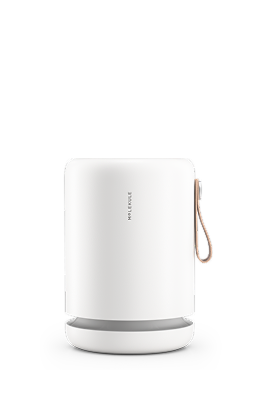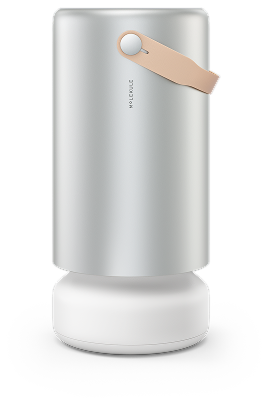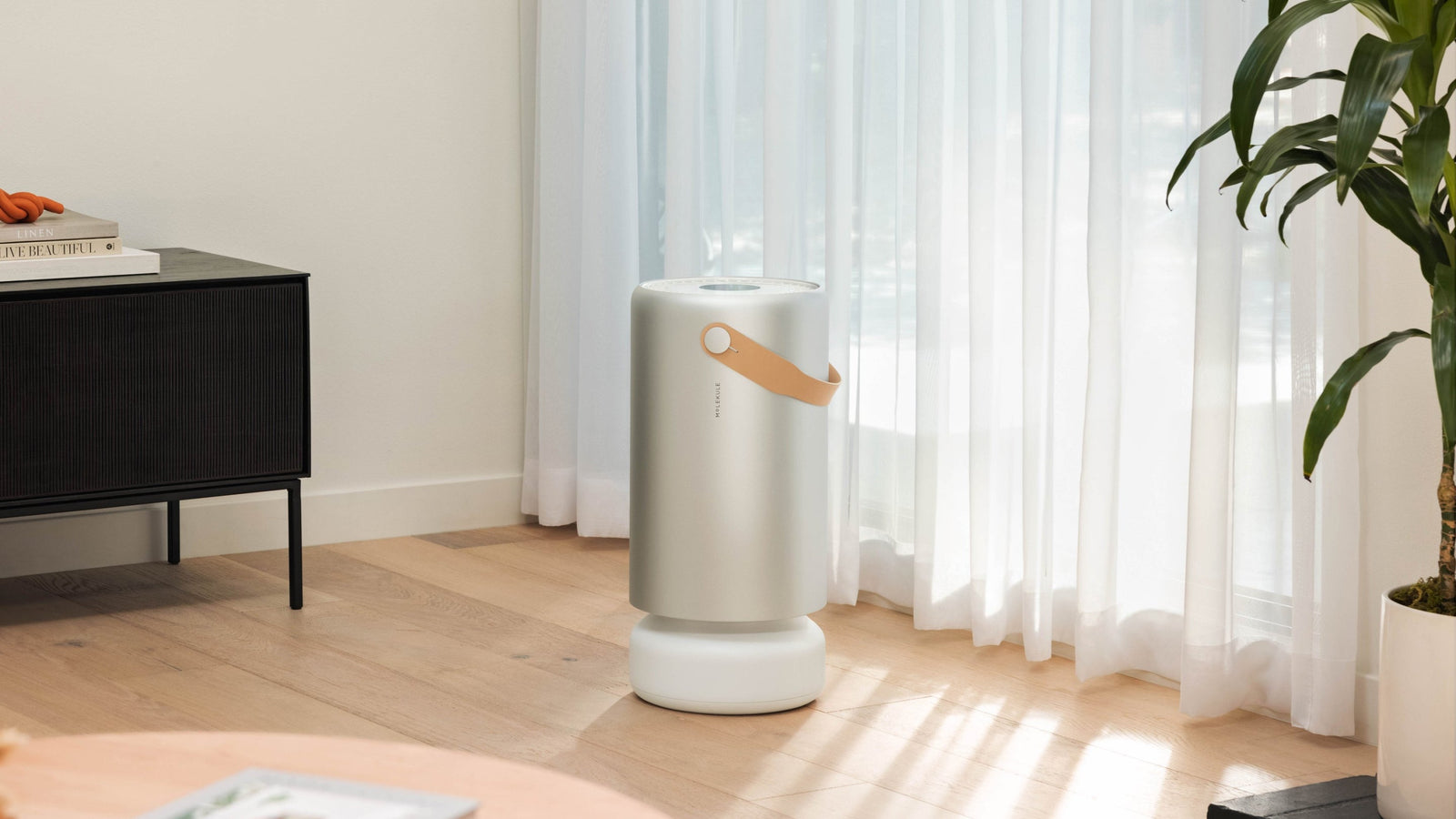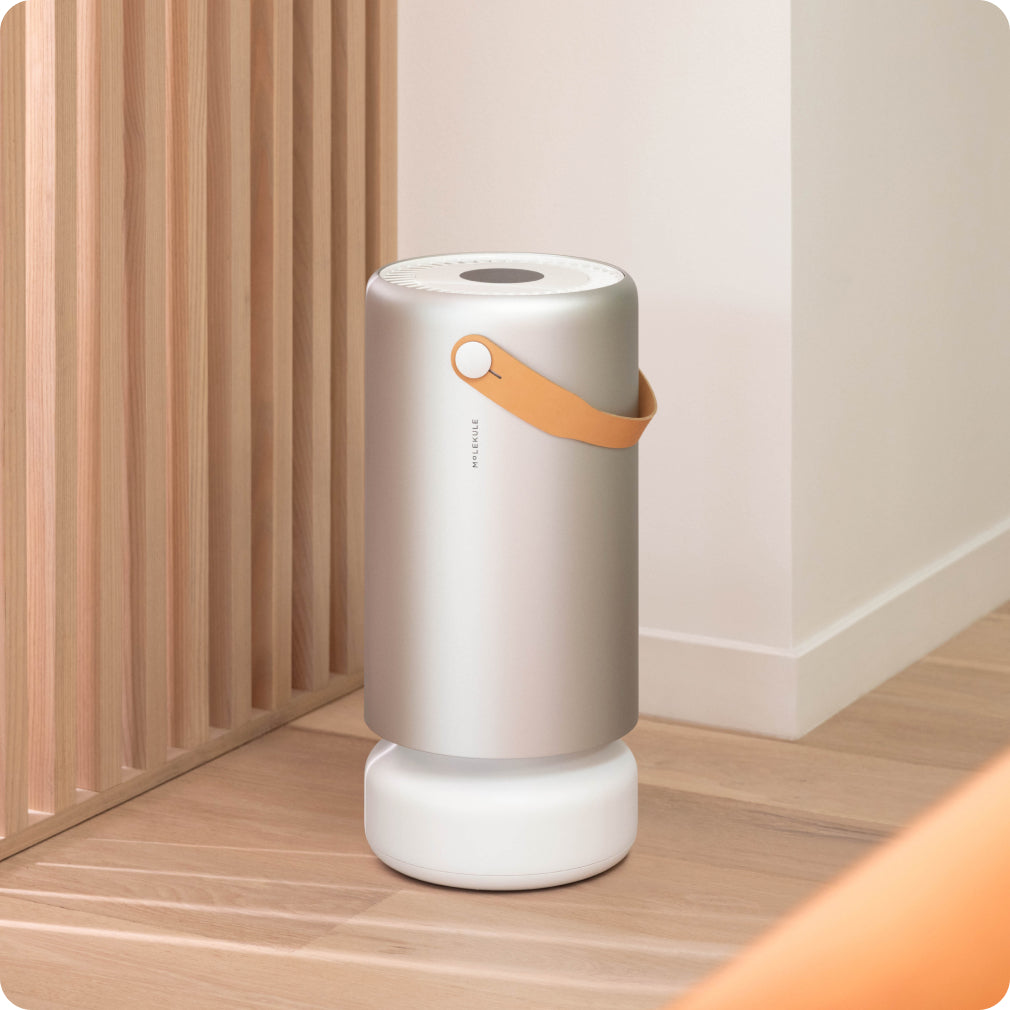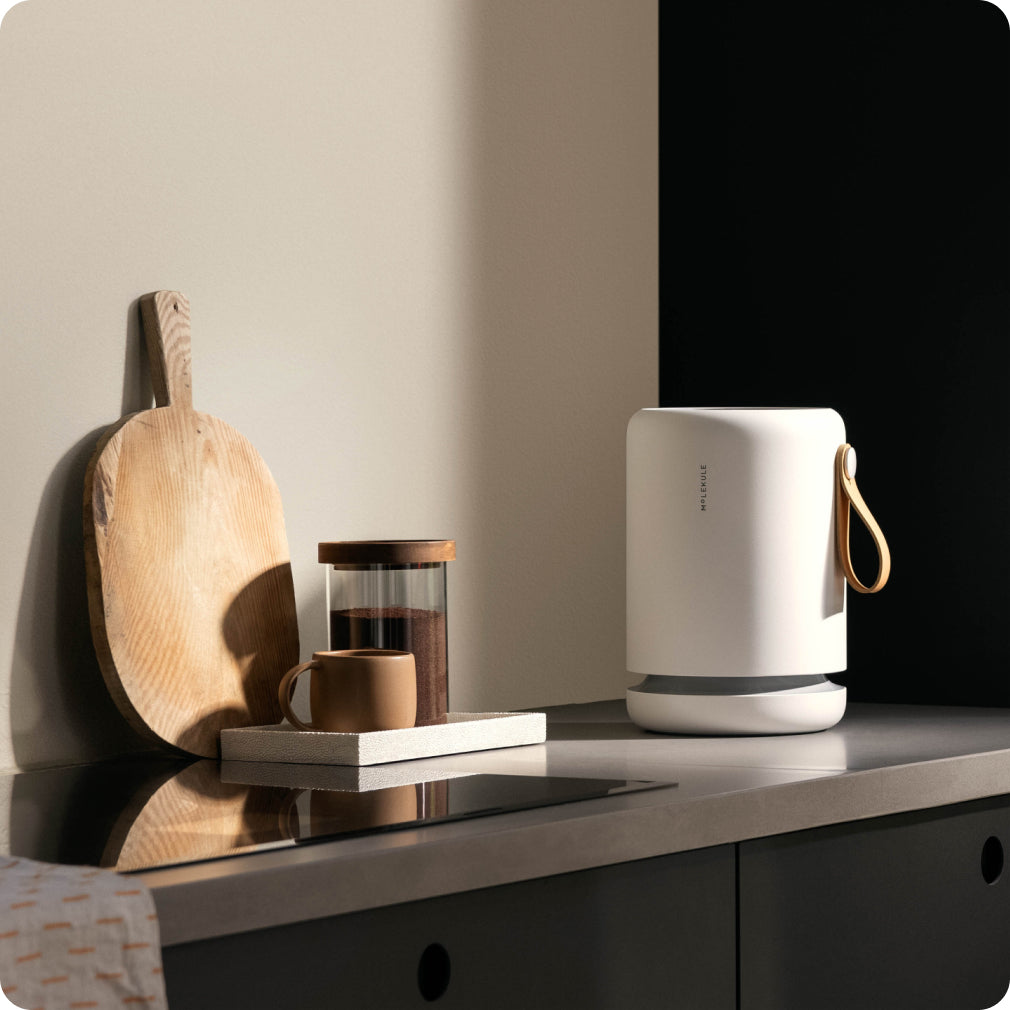Winter sniffles don’t always mean you’ve caught a cold. If your congestion, sneezing, or watery eyes last for weeks instead of days, chances are you’re dealing with seasonal allergies. Indoor triggers like dust mites, pet dander, mold, and even cockroach debris build up when homes are sealed tight for winter. That’s why many people turn to air purifiers, especially those with advanced technology that can eliminate allergens instead of just trapping them, to help keep their air clean and their symptoms under control.
Key Takeaways
-
Primary Triggers: Winter allergies stem from indoor allergens including dust mites, pet dander, mold, and cockroach allergens.
-
Duration Difference: Allergies persist for weeks or months while colds typically resolve within 7-10 days.
-
Distinctive Symptoms: Itchy, watery eyes and sneezing without fever indicate allergies rather than viral infections.
-
Seasonal Pattern: Symptoms worsen when heating systems circulate trapped allergens through sealed winter homes.
-
Comprehensive Treatment: Effective management requires both allergen reduction and advanced air purification technology.
What Are Cold Weather Allergy Triggers?
When winter sets in, allergy triggers shift from outdoor pollen to the allergens that build up indoors. Closed windows and heating systems create sealed environments where particles circulate without the natural ventilation warmer months provide.
The biggest culprits include dust mites thriving in heated, humid air, pet dander concentrated in enclosed spaces, mold spores in damp areas like bathrooms and basements, and even cockroach allergens spread through forced air systems. In today’s tightly sealed, energy-efficient homes, these factors add up to what allergists call “allergen load,” the cumulative exposure that drives symptom severity.
Primary Symptoms of Winter Allergies
Winter allergies can feel frustratingly similar to a lingering cold, but the symptoms have some important differences. Unlike viruses that clear up within a week or two, allergy symptoms persist for weeks or even months as long as exposure continues. They’re also driven by indoor triggers like dust mites, pet dander, and mold spores rather than seasonal germs.
Common Symptoms of Winter Allergies:
-
Nasal congestion: chronic stuffy or runny nose, often with clear, watery discharge
-
Sneezing: frequent, repetitive episodes rather than occasional bursts
-
Coughing: dry and persistent, unlike the mucus-filled cough of a cold
-
Postnasal drip: thin, clear mucus that lingers through the season
-
Itchy, watery eyes: redness, irritation, and tearing not usually seen with colds
-
Scratchy throat: persistent itch or tickle without the painful swallowing of a viral sore throat
-
Fatigue and exhaustion: immune response drains energy over time
-
Sleep disruption: congestion and drip make restful sleep difficult
-
Headaches: sinus pressure leads to tension headaches or facial pain
-
Concentration difficulties: brain fog from poor sleep and ongoing discomfort
Together, these symptoms can make winter allergies far more disruptive than a typical cold. Because they’re tied to environmental exposure rather than infection, the key to relief lies in reducing allergens indoors and supporting cleaner air, not just waiting it out.
Distinguishing Allergies from Common Colds
The biggest difference between winter allergies and colds is duration. Colds usually last about a week and follow a clear progression from onset to recovery, while allergies persist for weeks or months as long as exposure continues. Understanding natural congestion remedies can also highlight the distinction: temporary relief often works for viral symptoms, but allergies require ongoing management.
Other clues help tell them apart. Allergies rarely cause fever, body aches, or muscle pains, while colds and flu often do. Mucus also differs: allergies produce clear, watery discharge that stays consistent, while cold mucus tends to thicken and change color over time. Allergies are also more likely to cause itchy, watery eyes, whereas colds may make eyes a bit watery but rarely irritated.
Specific Indoor Allergen Sources
Indoor air quality often worsens in winter, when sealed homes and constant heating trap allergens inside. Four of the most common culprits can make cold-weather months especially challenging for allergy sufferers.
Dust Mites
Dust mites thrive in the warm, humid environments created by heating systems, especially in bedding, upholstery, and carpets. A single mattress can harbor millions, feeding on skin cells and releasing waste products that trigger allergic reactions.
Pet Dander
More time indoors with pets and less ventilation means greater exposure to lightweight proteins from saliva, dander, and urine that linger in the air and settle on surfaces—even so-called “hypoallergenic” breeds produce them.
Mold and Spores
Moisture-prone areas like bathrooms, basements, and window frames encourage mold growth, while heating systems spread spores throughout the home. Common species such as Cladosporium and Aspergillus act like indoor pollen, making addressing mold concerns essential for allergy control. Fortunately, strategies like home air purification can help with mold.
Cockroaches
Cockroaches move indoors during cold weather, leaving behind saliva, droppings, and shed body parts that become airborne through forced air systems. These invisible allergens accumulate in kitchens, behind appliances, and wall voids, making them difficult to fully eliminate.
How Heating Systems Worsen Winter Allergies
Heating systems often make winter allergies worse by circulating dust, mold spores, pet dander, and other particles that build up in ducts and vents. The dry air they produce also irritates nasal passages, heightening sensitivity and prolonging symptoms.
Low humidity from heating can dip below the ideal 30–50% range, drying out airways while still allowing allergens to circulate. On the flip side, poorly insulated or unevenly heated areas may trap moisture, creating perfect conditions for mold and dust mites to thrive.
Effective Winter Allergy Management Strategies
Managing winter allergies takes a mix of prevention and smart indoor adjustments. From controlling humidity to understanding air purifier benefits, a few key strategies can make your home far more comfortable during the colder months.
Humidity and Dust Mite Control
Keep indoor humidity between 30–50% to discourage dust mites while avoiding dryness that worsens nasal irritation. Use allergen-proof covers on bedding and wash sheets weekly in hot water (130°F) to reduce allergen buildup.
Filtration and Air Quality
Swap standard HVAC filters for high-efficiency ones and replace them monthly during winter. Since HVAC systems only capture what passes through, supplement with room-specific purifiers. Understanding air purifier benefits, including molecular destruction technology, helps ensure allergens are addressed at the source.
Pet Management
-
Bathe pets weekly to reduce dander.
-
Keep pets out of bedrooms and allergy-sensitive spaces.
-
Use air purifiers in rooms where pets spend the most time.
-
Change clothes and wash hands after extended contact.
These steps work best in combination, reducing allergen load and supporting cleaner indoor air all season long.
Medical Evaluation and Treatment Options
Consult healthcare providers when winter symptoms persist beyond 10 days, don't respond to over-the-counter treatments, or significantly interfere with daily activities and sleep quality. Persistent symptoms lasting weeks or months clearly indicate allergic rather than viral causes and require targeted treatment approaches.
Consider allergy testing if winter symptoms occur repeatedly each year or worsen progressively over time. Skin tests or specific IgE blood testing can identify exact allergen triggers and guide targeted treatment strategies rather than general symptom management.
Advanced home air purification systems with PECO technology eliminate allergens at their source, providing 24/7 protection that medication alone cannot achieve.
Seasonal Prevention and Long-Term Management
Conduct thorough home cleaning including carpet shampooing, duct cleaning, and mold remediation before winter isolation begins. Address any moisture problems, seal air leaks, and ensure adequate ventilation in problem areas before heating systems create optimal allergen circulation conditions.
Track your symptom patterns and severity throughout winter months to identify specific triggers and optimal treatment timing. Learn about common allergy triggers and keep detailed logs of your symptom changes in relation to weather patterns, heating system usage, and household activities that might increase your allergen exposure. Monitor your indoor air quality using professional-grade particle counters or smart air quality monitors that can detect changes in allergen levels before symptoms develop
Creating Allergy-Safe Winter Environments
Prioritize bedrooms and other high-exposure spaces with allergen-proof bedding, frequent cleaning, and molecular destruction air purification to reduce symptoms during sleep. Mindfulness techniques can improve your comfort and help you create a calm environment that’s conducive to deep sleep. Control moisture in bathrooms, kitchens, and basements with exhaust fans, dehumidifiers, and regular cleaning to prevent mold growth.
Pair traditional methods with advanced air purification that destroys allergens instead of just trapping them, and consider smart home systems that adjust purification automatically based on indoor conditions for continuous protection.
Molekule's Revolutionary Winter Allergy Solution
Molekule’s PECO technology destroys allergen proteins at the molecular level, preventing the buildup and re-release cycles common with traditional filters. Studies show PECO achieves up to 92% allergen destruction compared to HEPA’s 8%, ensuring cleaner, more consistent protection all winter.
Air Pro: Whole-Home Coverage
The Molekule Air Pro covers spaces up to 1000 square feet, destroying dust mite proteins, pet dander, mold spores, and more with FDA-cleared PECO-HEPA Tri-Power technology. Auto Protect mode adjusts to allergen levels, making it ideal for homes with forced-air systems.
Air Mini+: Bedroom Relief
Designed for rooms up to 250 square feet, Molekule’s mini air purifiers tackle allergens where exposure is highest: your bed. These sleep friendly air purifiers combine PECO technology with quiet operation to support healthier, more restful nights.
Frequently Asked Questions
How can I tell if winter symptoms are allergies or a cold?
Allergies cause persistent itchy, watery eyes and clear nasal discharge lasting weeks or months, while colds produce fever, body aches, and thick mucus that resolves within 7-10 days. Allergy symptoms remain consistent during exposure while cold symptoms progress through stages.
What are the most common winter allergy triggers indoors?
Dust mites, pet dander, mold spores, and cockroach allergens represent the primary winter triggers, becoming concentrated when heating systems circulate trapped particles through sealed homes with limited ventilation.
Why do my allergies seem worse in winter than other seasons?
Winter homes become sealed environments with heating systems that circulate allergens while reducing natural ventilation, creating higher concentrations of indoor triggers compared to warmer months when windows provide natural air exchange.
Can air purifiers really help with winter allergies?
Yes, but effectiveness depends on technology type. Basic HEPA filters only trap particles temporarily, while air purifiers with molecular destruction technology like Molekule's PECO systems permanently eliminate allergen proteins at the source rather than just collecting them.
Should I take allergy medication throughout winter?
Consistent medication use provides better symptom control than intermittent treatment, but combining medication with comprehensive allergen elimination through environmental controls and advanced air purification offers superior long-term relief.
How do I reduce dust mites during winter months?
Maintain humidity below 50%, use allergen-proof bedding covers, wash bedding weekly in 130°F water, and remove carpeting where possible. Combine these measures with molecular-level air purification to eliminate airborne dust mite allergens continuously.
